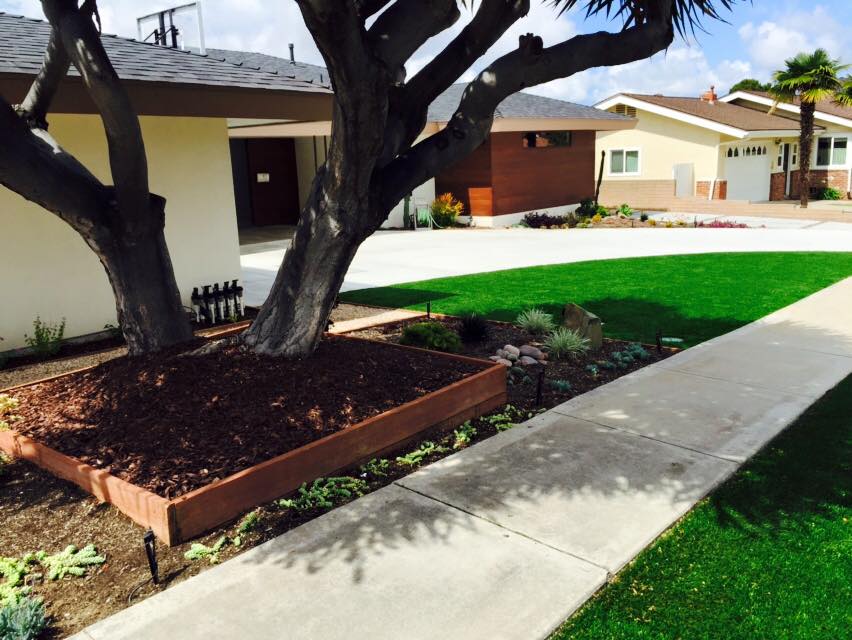Incorporating sustainable practices in landscape renovation is not just a trend but a necessary approach to preserving our environment while enhancing outdoor spaces. By adopting eco-friendly solutions, homeowners can create beautiful, functional landscapes that also contribute positively to the environment. Here’s how you can integrate sustainability into your landscape renovation project.
1. Embrace Native Plants
1.1 Benefits of Native Plants: Native plants are adapted to the local climate and soil conditions, making them more resilient and less dependent on irrigation and chemical fertilizers. They require less maintenance and support local wildlife by providing habitat and food sources.
1.2 Choosing Native Species: Research which native plants thrive in your region. Consult local nurseries or gardening experts for recommendations on plants that will flourish in your landscape renovation.
2. Implement Water-Efficient Practices
2.1 Smart Irrigation Systems: Install drip irrigation or soaker hoses to deliver water directly to the plant roots, reducing water waste. Smart irrigation systems can be programmed to water plants based on weather conditions and soil moisture levels.
2.2 Rainwater Harvesting: Collect rainwater from gutters and downspouts in barrels or tanks. This water can be used to irrigate your garden, reducing reliance on municipal water supplies and lowering water bills.
2.3 Xeriscaping: Consider xeriscaping, a landscaping technique that uses drought-resistant plants and minimizes the need for irrigation. This approach is particularly effective in arid and semi-arid regions.
3. Choose Sustainable Hardscaping Materials
3.1 Recycled and Reclaimed Materials: Opt for hardscaping materials made from recycled or reclaimed sources, such as recycled concrete, reclaimed bricks, or repurposed wood. These materials reduce the demand for new resources and decrease landfill waste.
3.2 Permeable Paving: Use permeable paving materials for driveways and walkways. These materials allow water to infiltrate the ground, reducing runoff and promoting groundwater recharge.
3.3 Sustainable Stone Choices: Select natural stone or eco-friendly alternatives that have been sourced responsibly. Look for certifications that indicate sustainable quarrying practices.
4. Enhance Soil Health
4.1 Organic Soil Amendments: Use organic compost and mulch to enrich the soil and improve its structure. These amendments enhance soil fertility and moisture retention while reducing the need for chemical fertilizers.
4.2 Erosion Control: Implement erosion control methods such as planting ground covers, installing silt fences, or creating terraced garden beds. These techniques help prevent soil erosion and maintain landscape integrity.
4.3 Avoid Chemical Pesticides: Opt for natural pest control methods, such as introducing beneficial insects or using organic pest repellents. Reducing or eliminating chemical pesticides minimizes environmental impact and protects pollinators.
5. Design for Energy Efficiency
5.1 Strategic Planting: Plant trees and shrubs strategically to provide shade and windbreaks. Proper placement can reduce heating and cooling costs for your home by regulating temperature and reducing energy consumption.
5.2 Green Roofs and Walls: Consider incorporating green roofs or living walls into your landscape design. These features provide insulation, reduce urban heat island effects, and enhance air quality.
6. Promote Wildlife Habitat
6.1 Create Wildlife Gardens: Design garden spaces that attract and support local wildlife, such as birds, bees, and butterflies. Use native plants, birdhouses, and pollinator-friendly flowers to create a thriving ecosystem.
6.2 Avoid Using Invasive Species: Steer clear of planting invasive species that can disrupt local ecosystems and outcompete native plants. Focus on species that enhance biodiversity and support native wildlife.
7. Sustainable Lawn Alternatives
7.1 Low-Maintenance Ground Covers: Replace traditional lawns with low-maintenance ground covers, such as clover or creeping thyme. These alternatives require less water, fertilizer, and mowing.
7.2 Meadow Gardens: Create meadow gardens with a mix of grasses and wildflowers. These gardens provide a natural look, support wildlife, and reduce the need for lawn maintenance.
8. Consider Renewable Energy
8.1 Solar Lighting: Use solar-powered garden lights and outdoor fixtures. Solar lighting harnesses the sun’s energy and reduces reliance on electricity, cutting down on energy costs.
8.2 Solar Water Features: Incorporate solar-powered water features, such as fountains or pumps, to enhance your landscape without increasing your energy consumption.
Sustainable practices in landscape renovation offer a range of benefits, from reducing environmental impact to creating low-maintenance, eco-friendly outdoor spaces. By integrating native plants, water-efficient practices, and sustainable materials, homeowners can achieve a beautiful landscape that aligns with environmental stewardship. Embrace these eco-friendly solutions to not only enhance your outdoor space but also contribute to a healthier planet.
Let Huizar’s Landscape create a landscape renovation plan for your existing yard. Contact us.

